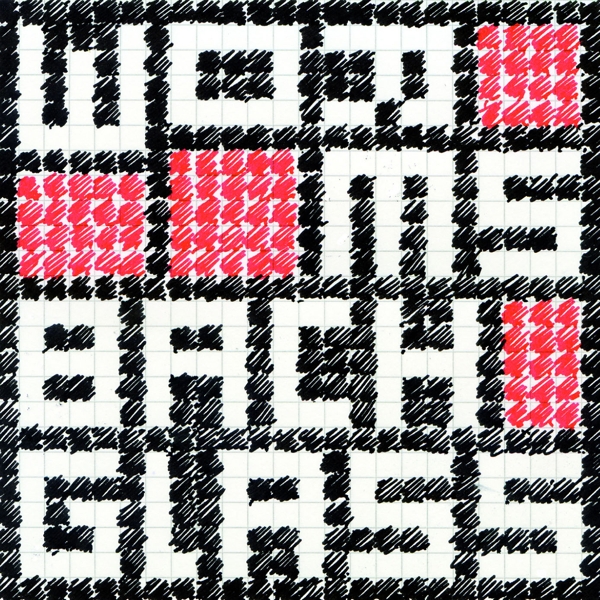Bisherige Auswahl:
keine Auswahl
Ergebnis einschränken:
|
Weitere Produkte von Marcel Worms |
| Bemerkungen / Titelliste: |
1.1 Goldbergvariations BWV 998: Aria1.2 Goldbergvariations BWV 998: Variatio 11.3 Goldbergvariations BWV 998: Variatio 21.4 Goldbergvariations BWV 998: Variatio 31.5 Goldbergvariations BWV 998: Variatio 41.6 Goldbergvariations BWV 998: Variatio 51.7 Goldbergvariations BWV 998: Variatio 61.8 Goldbergvariations BWV 998: Variatio 71.9 Goldbergvariations BWV 998: Variatio 81.10 Goldbergvariations BWV 998: Variatio 91.11 Goldbergvariations BWV 998: Variatio 101.12 Goldbergvariations BWV 998: Variatio 111.13 Goldbergvariations BWV 998: Variatio 121.14 Goldbergvariations BWV 998: Variatio 131.15 Goldbergvariations BWV 998: Variatio 141.16 Goldbergvariations BWV 998: Variatio 151.17 Goldbergvariations BWV 998: Variatio 161.18 Goldbergvariations BWV 998: Variatio 171.19 Goldbergvariations BWV 998: Variatio 181.20 Goldbergvariations BWV 998: Variatio 191.21 Goldbergvariations BWV 998: Variatio 201.22 Goldbergvariations BWV 998: Variatio 211.23 Goldbergvariations BWV 998: Variatio 221.24 Goldbergvariations BWV 998: Variatio 231.25 Goldbergvariations BWV 998: Variatio 241.26 Goldbergvariations BWV 998: Variatio 251.27 Goldbergvariations BWV 998: Variatio 261.28 Goldbergvariations BWV 998: Variatio 271.29 Goldbergvariations BWV 998: Variatio 281.30 Goldbergvariations BWV 998: Variatio 291.31 Goldbergvariations BWV 998: Variatio 301.32 Goldbergvariations BWV 998: Aria Da Capo1.33 Metamorphosis One1.34 Metamorphosis Two1.35 Metamorphosis Three1.36 Metamorphosis Four1.37 Metamorphosis Five1.38 The Well Tempered Clavier BWV 846: Prelude in C |
 | | Anzahl der Tonträger: |
1 |
 | | Beschreibung: | The Goldberg Variations consist of an Aria followed by thirty variations and the reprise of the Aria at the end. Bach wrote the work for a harpsichord with two manuals, a given with which a pianist-who has only the one keyboard at his disposal-is painfully confronted when two voices cross each other: his hands have to fight each other for the available space. Bach composed the variations around 1741, and chose an earlier Aria from the Klavierbüchlein für Anna Magdalena Bach for his theme. The Goldberg Variations were published in 1742. Bach couldn't have guessed that his Goldberg Variations would come to be considered one of the pillars of Western classical music. Yet with hindsight it's easy to understand the composition's undisputed place in the classical music tradition and repertoire. No composer before Bach had ever written so many variations on a single theme, and never so freely and richly filled with fantasy. Structure and feeling, form and content, reason and emotion are all beautifully in balance. Even with the enormous diversity in the variations, the relationship to the theme is always audible. The range and scale of the required keyboard techniques is enormous. A number of these techniques are akin to those of contemporaries, but others point far into the future. The Goldberg Variations form in this way a comprehensive keyboard tutorial, referring for example to the techniques of Domenico Scarlatti, a contemporary, but also leading the way to, among others, Chopin (Var. 26) and Liszt (Var. 29). Metamorphosis, one of Glass's best-known compositions for solo piano, is based on his music from a theatrical setting of Kafka's famous story "Die Verwandlung" ("The Metamorphosis") (1915), in which the protagonist Gregor Samsa wakes one morning to find himself changed into a giant beetle. There is no lack of high-flown interpretations of Glass's work. Metamorphosis is often analyzed, sometimes even on non-musical grounds. One relatively sober analysis explains the work as the life-cycle of an organism: from the seed state (I) to the stage of germination (II), and, after the growth period (III) and the time of flowering (IV), on toward final, unavoidable death (V). One of the reasons for the popularity of the music of Glass and his fellow minimalists is it's strongly tonal character, which greatly increases it's accessibility. Metamorphosis is written in E minor, a key closely related to G major, the key with which E minor shares two of the three notes of it's primary triad-and which is also the key of the Goldberg Variations. During his study with Nadia Boulanger in Paris (1963-1965), Glass worked intensively with counterpoint and especially with the music of Bach. His love and admiration for Bach's work has always stayed with him: in 2008 he wrote, at 71, his Songs and Poems for cello solo, a work which, with it's Baroque character, could almost pass for a long-lost Bach Suite. This same combination of Baroque and contemporary idioms is shown in an even more recent work, Glass's Partita for solo violin (2011), which, with it's Prelude, Chaconne, and two dances clearly alludes to the violin partitas of Bach. The premiere of this Partita by the violinist Tim Fain took place on May 14, 2011, in the same hall where the CD that you now hold in your hands was recorded: the Zeeuwse Concertzaal in Middelburg, the capital of the Dutch province of Zeeland. The minimalism of Glass and his colleagues was hailed as a totally new musical idiom. But striving to reach a desired result with maximum expression while using a minimum of material is as old as art itself. Bach's work also shows the striving for this ideal. With the benefit of hindsight, it is clear that we could even consider his famous Prelude in C major, the opening of the Well-Tempered Clavier, to be "minimal music avant la lettre.", Composed By: Johann Sebastian Bach, Design, Artwork: Guido Lippens, Graphic Design: Daan Schiff, Liner Notes [Translation]: Elizabeth Gaskill, Music Director: Jakko Van Der Heijden, Photography By: Eddy Westveer, Piano: Marcel Worms, Technician [Piano]: Joost van Hartevelt, Composed By: Johann Sebastian Bach, Composed By: Philip Glass, Composed By: Johann Sebastian Bach, Labelcode ZEFI5638009869.2 (ZEF 9629), Phonographic Copyright (p) Zefir Records, Copyright (c) Zefir Records, Recorded At Zeeuwse Concertzaal, Middelburg |  | | Anzahl der Titel: |
38 |
 | | Herstellernummer: |
ZEF9629 |
 | Details zur Produktsicherheit
Verantwortliche Person für die EU:
Bertus Musikvertrieb
Bertus Musikvertrieb
Akeleibaan 59, 2908 KA Capelle aan den Ijssel, NL
service@bertus.com |  |
|
Zu diesem Artikel liegen leider noch keine Bewertungen vor.
|  |
|
|
 |
|
|
|
|
|
|
| |
- Du besitzst "Bach Glass" oder kennst den Artikel bereits?
- Dann schreibe doch eine Produktbewertung.
- Wir belohnen deine Mühen mit Bewertungspunkten, einlösbar für exklusive Gratisartikel.
|
|
|
|
|
|
|
|
|


























